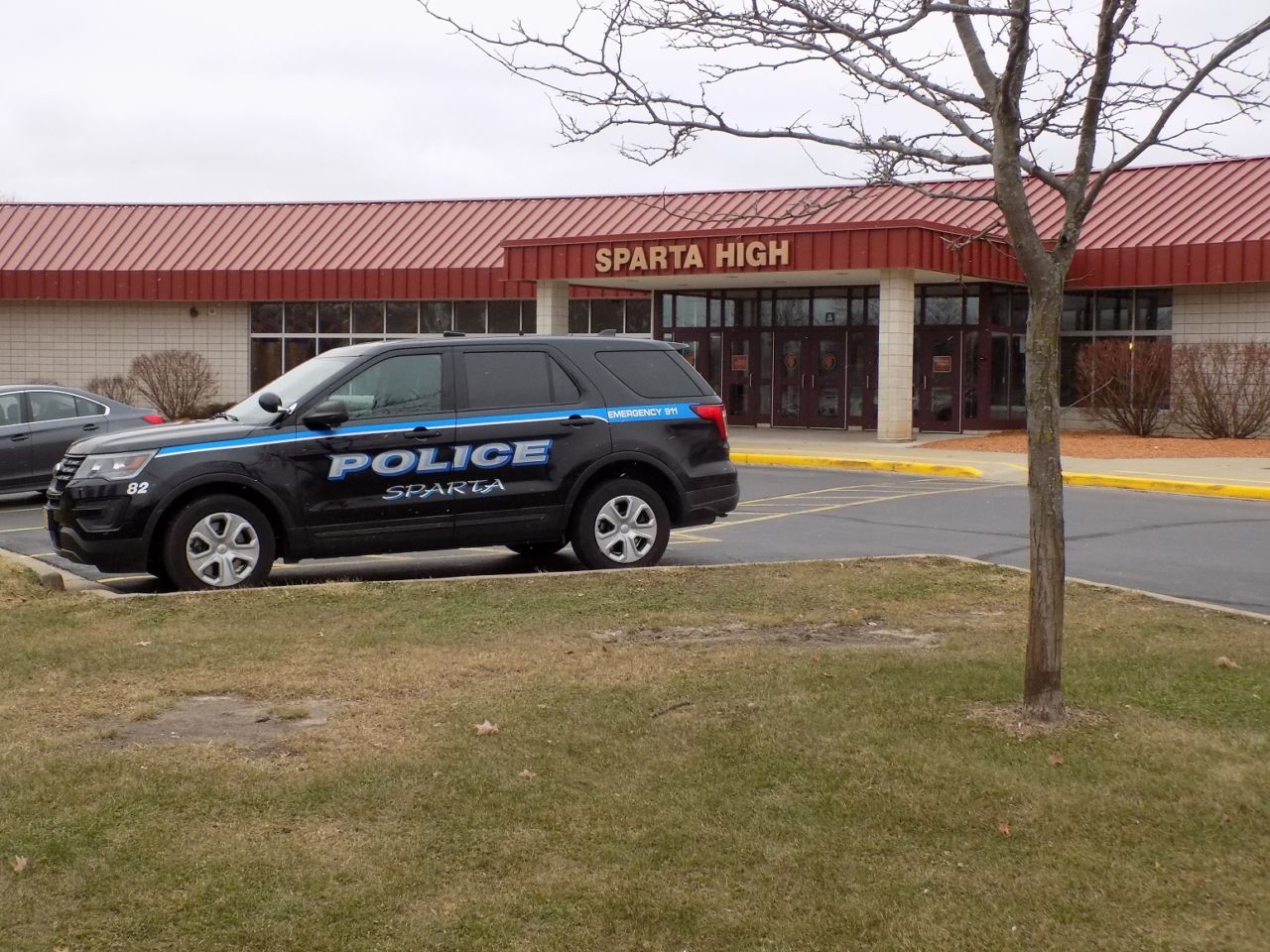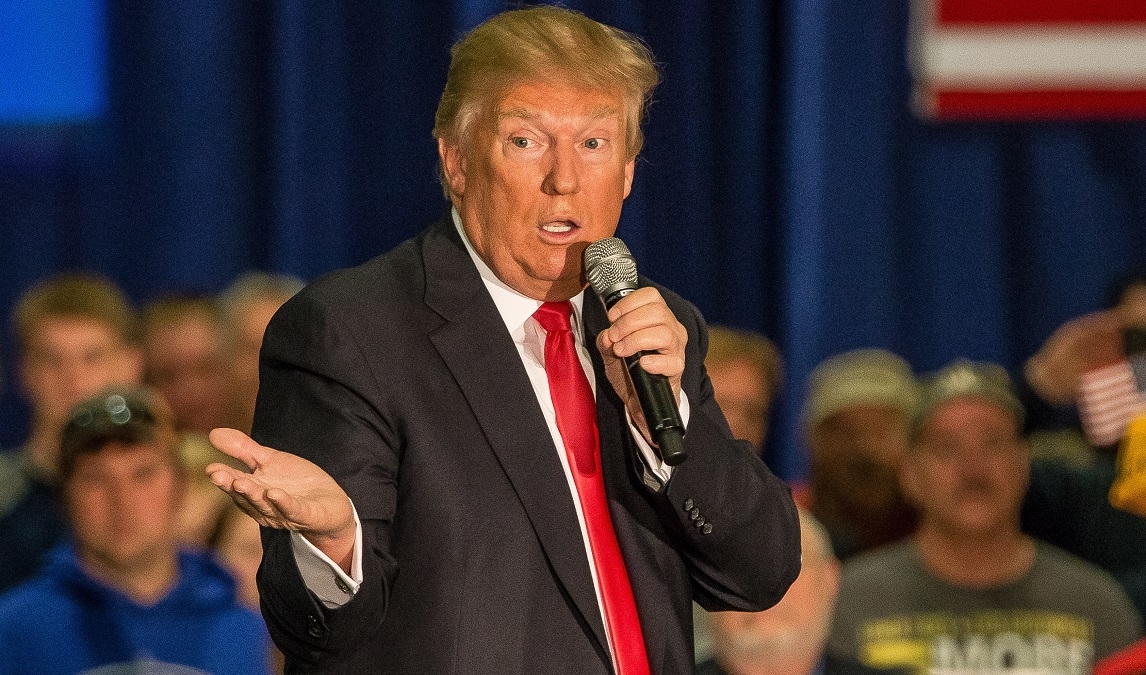National
In US schools, resource officers woven into daily life

NEWTOWN, Conn. (AP) — An imposing presence in uniform at 6-foot-5, Officer Will Chapman towers over students in the halls of Newtown Middle School, but he tries to be as approachable as possible.
The school resource officer known as “Officer Will” aims to been seen by each student at least three times a day as he walks the halls 2 miles from Sandy Hook Elementary School, where a 2012mass shooting left 20 students and six educators dead. He drops into art class and joins in on projects. Some days, he takes math quizzes alongside students.
The police officers assigned to schools receive scrutiny in times of emergency — as in Wisconsin, where school resource officers were involved in two student shootings this week — but they also play a less-known role in the rhythms of everyday American classroom life.
Beyond their law enforcement role, the model for school resource officers endorsed by the U.S. Justice Department enlists them also as mentors, informal counselors and educators on topics ranging from bullying to drunk driving with the goal of promoting school safety.
School resource officers receive the same baseline training as other officers, but experts say doing the job well requires skills and training to understand and build strong relationships with young people.
“It is very much a community-based policing approach,” said Mo Canady, executive director of the National Association of School Resource Officers. “This is about problem solving, relationship building and doing things to make a positive difference in the lives of kids, quite frankly.”
Chapman, for one, said he works hard to ensure students know he is there for them — and not because of them.
“I want my students to understand first and foremost that I love them dearly and there is nothing they can do, bad or good, to change how much I care about them,” he said. “Their choices can limit my options in how I communicate that love, but it is never any less true.”
Nationwide, 43% of public schools had an armed law enforcement officer present at least once a week in the 2015-2016 school year, the last time the National Center for Education Statistics released data on this topic. The officers work closely with school administrators, who are encouraged to reach understandings with officers that disciplinary issues short of anything illegal are to be handled by school officials.
In cases of real and immediate threats to students or teachers, however, the rules on use of force are set by the police departments that assign the officers to the schools.
That is important because it is the police department that ensures the officer has the appropriate training, said Jeff Kaye, president of School Safety Operations, a consulting firm. In the event of a police shooting, the officer also should face oversight from an agency with expertise in use-of-force policies, he said.
In Wisconsin, an Oshkosh Police Department resource officer shot a 16-year-old student Tuesday after the boy stabbed him at Oshkosh West High School. On Monday, a resource officer at Waukesha South High School helped clear students out of a classroom after a student pointed a pellet gun at another student’s head. Another police officer entered the room and shot the student. Neither of the students who were shot suffered life-threatening injuries.
Chapman said he always parks his cruiser where it is visible from the street, in part to reassure parents in a community still recovering from one of the deadliest school shootings in U.S. history. He’s able to focus more on students because of private armed security hired in the tragedy’s aftermath.
“It frees me up to go into a classroom and sit down and dissect a frog with seventh graders because I’m not constantly worried about, ‘What if somebody comes in that we don’t want here?’” he said.
At Aberdeen Middle School in Maryland, school resource officer Jason Neidig said he greets students as they enter the building to look for anything out of the ordinary and takes aside any who seem upset to ask if they want to talk. He walks the hallways, checks areas where weapons could be hidden and joins administrators in meetings with troubled students. He pokes fun at himself and trades messages with students on his Instagram account as @srojason.
“I do not take the stereotypical ‘aggressive’ approach when talking to students, not even the ones I sometimes have to refer to the Department of Juvenile Services or arrest,” he said.
The growth in the number of officers inside schools over the last quarter century has led to fears about children getting caught up in the criminal justice system, furthering the so-called school-to-prison pipeline. A 2013 review by the Congressional Research Service found that students in schools with resources officers might be more likely to be arrested for low-level offenses, but studies also indicated that the officers could deter students from committing assaults or bringing weapons to campus. Critics in some communities also have argued the funding would be better spent on mental health programming and school counselors.
Some school resource officers have come up short of expectations, including the school resource officer in Parkland, Florida, who remained outside rather than entering the building to engage the shooter.
In Fort Lauderdale, Florida, school security video showed a sheriff’s deputy slamming a 15-year-old girl to the ground in September after she tapped his knee with her foot. In October, a New Mexico police officer was shown on video throwing an 11-year-old girl on the ground.
Officers with experience as school resource officers say those with the right skills can make a lasting difference in children’s lives.
“A patrol officer can get an award for saving a life or reviving a person in an overdose situation. You can’t quantify how successful a school resource officer is,” said Officer Kelly DeJonge, a spokeswoman for the Glendale, Wisconsin, police department who spent a decade as a high school resource officer. “If a kid is dealing with mental health issues, and they come to a school resource officer, and they are there to help and listen to them, did that officer save that person’s life possibly? You never know.”






